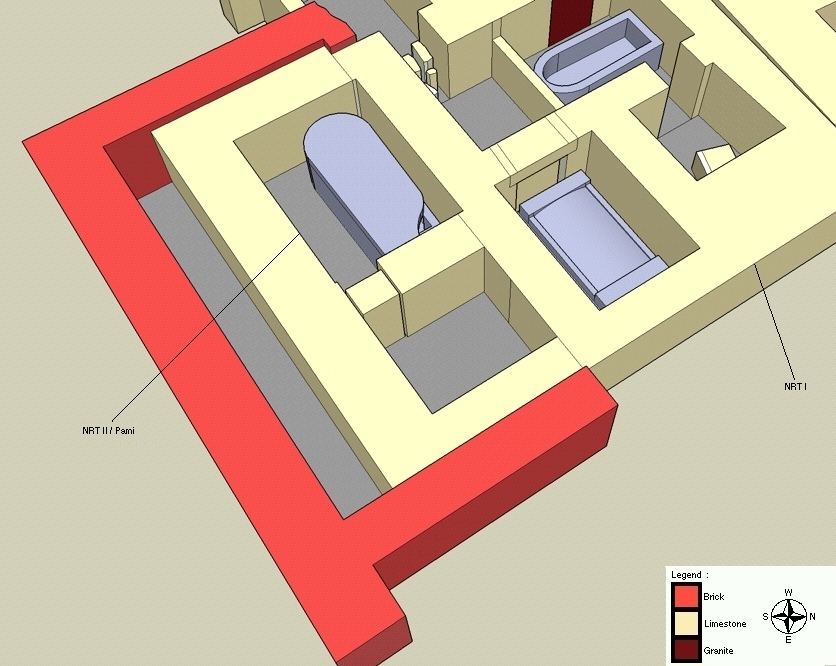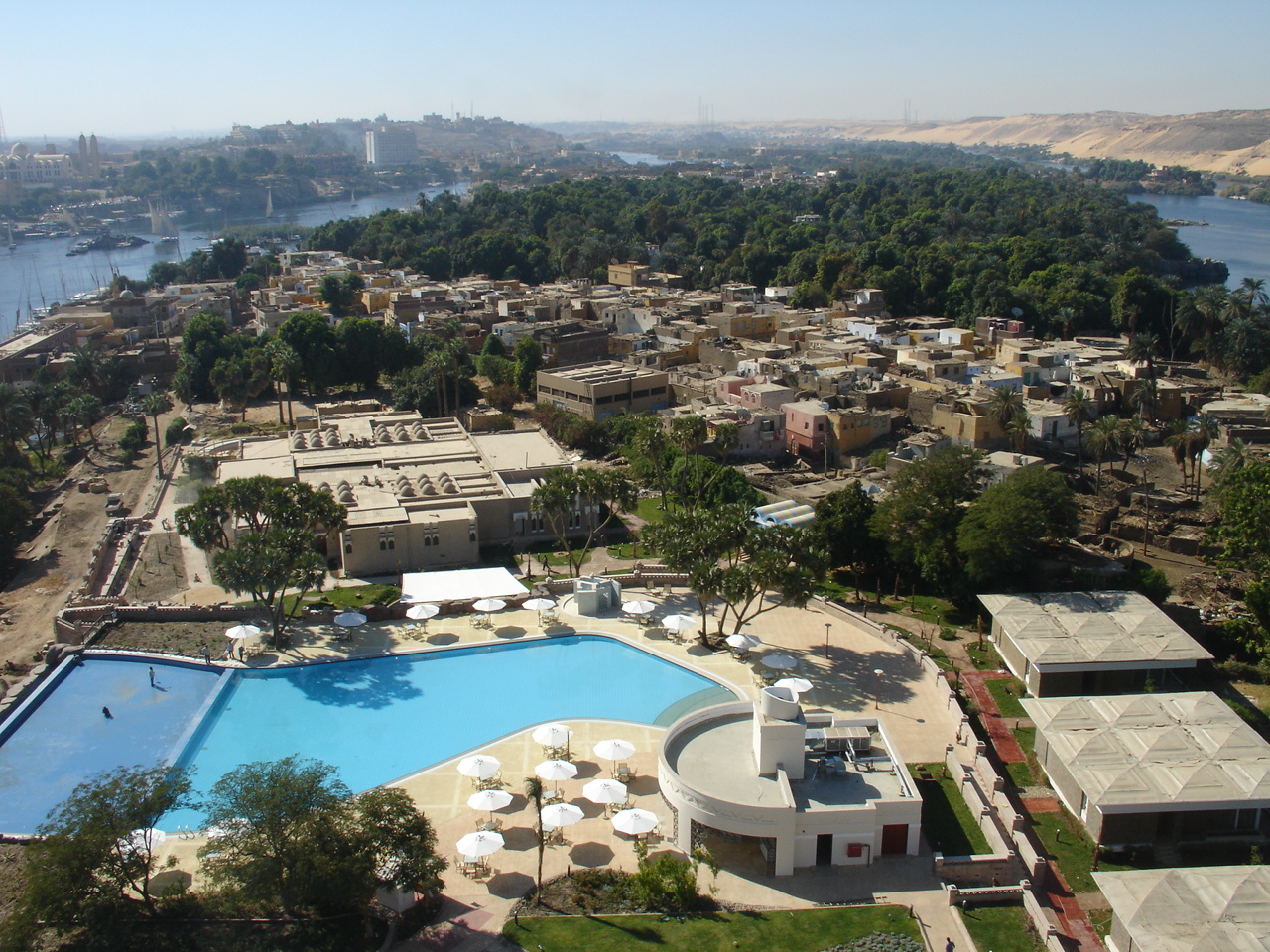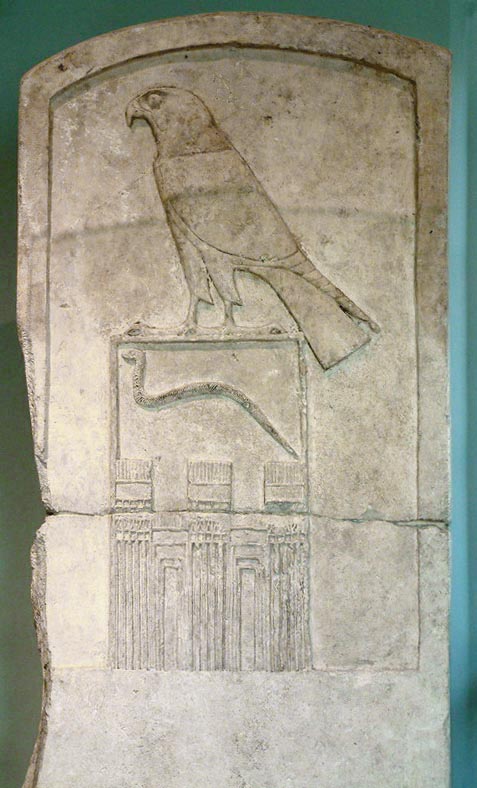|
Osorkon B
Usermaatre Setepenamun Osorkon III Si-Ese was Pharaoh of Egypt in the 8th Century BC. He is the same person as the Crown Prince and High Priest of Amun Osorkon B, son of Takelot II by his Great Royal Wife Karomama II. Prince Osorkon B is best attested by his ''Chronicle''—which consists of a series of texts documenting his activities at Thebes—on the Bubastite Portal at Karnak. He later reigned as king Osorkon III in Upper Egypt for twenty-eight years after defeating the rival forces of Pedubast I/Shoshenq VI who had apparently resisted the authority of his father here. Osorkon ruled the last five years of his reign in coregency with his son, Takelot III, according to Karnak Nile Level Text No. 13. Osorkon III's formal titulary was long and elaborate: Usermaatre Setepenamun, Osorkon Si-Ese Meryamun, Netjer-Heqa-waset. Accession Osorkon III's precise accession date is unknown. Various Egyptologists have suggested it may have been from around the mid-790s BC to as late as 7 ... [...More Info...] [...Related Items...] OR: [Wikipedia] [Google] [Baidu] |
Seker
Seker (; also spelled Sokar, and in Greek, Sokaris or Socharis) is a falcon god of the Memphite necropolis in the Ancient Egyptian religion. Name Although the meaning of his name remains uncertain, the Egyptians in the Pyramid Texts linked his name to the anguished cry of Osiris to Isis 'Sy-k-ri' ('hurry to me'),The Routledge Dictionary of Egyptian Gods and Goddesses, George Hart or possibly ''skr,'' meaning "cleaning the mouth". In the underworld, Seker is strongly linked with two other gods, Ptah the Creator god and chief god of Memphis, and Osiris the god of the dead. In later periods, this connection was expressed as the triple god Ptah-Seker-Osiris. The Faiyumic Coptic form ⲥⲓⲭⲟⲗ is possibly preserved in a personal name ⲥⲉⲛⲥⲓⲭⲟⲗ "daughter of Sokar". Appearance Seker was usually depicted as a mummified hawk and sometimes as a mound from which the head of a hawk appears. Here he is called 'he who is on his sand'. Sometimes he is shown on his ... [...More Info...] [...Related Items...] OR: [Wikipedia] [Google] [Baidu] |
Precinct Of Amun-Re
The Precinct of Amun-Re, located near Luxor, Egypt, is one of the four main temple enclosures that make up the immense Karnak Temple Complex. The precinct is by far the largest of these and the only one that is open to the general public. The temple complex is dedicated to the principal god of the Theban Triad, Amun, in the form of Amun-Re. The site occupies some 250,000 m² and contains many structures and monuments. The main temple itself, the Temple of Amun, covers some 61 acres. Some parts of the complex are closed or semi-closed, including large parts of the North-South Axis (the 8th, 9th, and 10th pylons), which are under active excavation or restoration. The whole southeast corner is semi-closed. The northwest corner is a museum that requires an additional ticket to visit. Most of the southwest is an open-air assembling area containing millions of stone fragments, from small to huge, laid out in long rows, awaiting reassembly into their respective monuments. The area is ... [...More Info...] [...Related Items...] OR: [Wikipedia] [Google] [Baidu] |
Karl Jansen-Winkeln
Karl may refer to: People * Karl (given name), including a list of people and characters with the name * Karl der Große, commonly known in English as Charlemagne * Karl Marx, German philosopher and political writer * Karl of Austria, last Austrian Emperor * Karl (footballer) (born 1993), Karl Cachoeira Della Vedova Júnior, Brazilian footballer In myth * Karl (mythology), in Norse mythology, a son of Rig and considered the progenitor of peasants (churl) * ''Karl'', giant in Icelandic myth, associated with Drangey island Vehicles * Opel Karl, a car * ST ''Karl'', Swedish tugboat requisitioned during the Second World War as ST ''Empire Henchman'' Other uses * Karl, Germany, municipality in Rhineland-Palatinate, Germany * ''Karl-Gerät'', AKA Mörser Karl, 600mm German mortar used in the Second World War * KARL project, an open source knowledge management system * Korean Amateur Radio League, a national non-profit organization for amateur radio enthusiasts in South Korea * KARL, ... [...More Info...] [...Related Items...] OR: [Wikipedia] [Google] [Baidu] |
Pami
Usermaatre Setepenre Pami was an ancient Egyptian pharaoh of the 22nd Dynasty who ruled for 7 years. "Pami" in Egyptian, means "the Cat" or "He who belongs to the Cat astet" Identity Pami's precise relationship with his immediate predecessor Shoshenq IV is unknown. He is attested as the father of Shoshenq V in a stela from the Serapeum of Saqqara, dating to the eleventh year of the latter's reign. Pami was once assumed to be Pimay, the third son of Shoshenq III who served as the "Great Chief of Ma" under his father. However, the different orthographies of their names (Pami vs. Pimay) prove that they were 2 different individuals. The name Pami translates as 'The Cat' in Egyptian whereas the name Pimay means 'The Lion.' Pami's name was mistakenly transcribed as Pimay by past historians based upon the identification with Shoshenq III's son. While a previous Dynasty 22 king held the title 'Great Chief of the Ma' before ascending the throne–namely Shoshenq I–Shosh ... [...More Info...] [...Related Items...] OR: [Wikipedia] [Google] [Baidu] |
Twenty-second Dynasty Of Egypt
The Twenty-second Dynasty of Egypt is also known as the Bubastite Dynasty, since the pharaohs originally ruled from the city of Bubastis. It was founded by Shoshenq I. The Twenty-first, Twenty-second, Twenty-third, Twenty-fourth, and Twenty-fifth dynasties of ancient Egypt are often combined under the group designation of the Third Intermediate Period. Rulers The pharaohs of the Twenty-second Dynasty were a series of Meshwesh (ancient Libyan tribe) chieftains, who ruled from c. 943 BC until 716 BC. They had settled in Egypt since the Twentieth Dynasty and were known in Egypt as the 'Great Chiefs of the Ma' (Ma being a synonym of Meshwesh). Manetho states that this Egyptianized ancient Libyan dynasty first ruled over Bubastis, but its rulers almost certainly governed from Tanis, which was their capital and the city where their tombs have been excavated. Another pharaoh who belongs to this group is Tutkheperre Shoshenq. His period of rule within this dynasty is currently unc ... [...More Info...] [...Related Items...] OR: [Wikipedia] [Google] [Baidu] |
Herakleopolis Magna
Heracleopolis Magna ( grc-gre, Μεγάλη Ἡρακλέους πόλις, ''Megálē Herakléous pólis'') and Heracleopolis (, ''Herakleópolis'') and Herakleoupolis (), is the Roman name of the capital of the 20th nome of ancient Upper Egypt, known in Ancient Egyptian as ''Het-Nesut''. The site is located approximately west of the modern city of Beni Suef, in the Beni Suef Governorate of Egypt. Name In Ancient Egypt, Heracleopolis Magna was called Child of the King (appearing as ''hnn nswt'' or ''hwt nn nswt''; also transcribed Henen-Nesut or Hut-Nen-Nesut). This later developed into cop, Ϩⲛⲏⲥ or ϩⲛⲉⲥ (), which was borrowed into early arz, اهناس ''Ahnās''. The site is now known as ''Ihnasiyyah Umm al-Kimam'' "Ihnasiyyah, Mother of the Shards" and as ''Ihnasiyyah al-Madinah'' "The City of Ihnasiyyah". The Greek name meant "City of Heracles", with the epithet "great" being added to distinguish it from other towns with that name. The Greek form b ... [...More Info...] [...Related Items...] OR: [Wikipedia] [Google] [Baidu] |
Stela
A stele ( ),Anglicized plural steles ( ); Greek plural stelai ( ), from Greek , ''stēlē''. The Greek plural is written , ''stēlai'', but this is only rarely encountered in English. or occasionally stela (plural ''stelas'' or ''stelæ''), when derived from Latin, is a stone or wooden slab, generally taller than it is wide, erected in the ancient world as a monument. The surface of the stele often has text, ornamentation, or both. These may be inscribed, carved in relief, or painted. Stelae were created for many reasons. Grave stelae were used for funerary or commemorative purposes. Stelae as slabs of stone would also be used as ancient Greek and Roman government notices or as boundary markers to mark borders or property lines. Stelae were occasionally erected as memorials to battles. For example, along with other memorials, there are more than half-a-dozen steles erected on the battlefield of Waterloo at the locations of notable actions by participants in battle. A traditio ... [...More Info...] [...Related Items...] OR: [Wikipedia] [Google] [Baidu] |
Relief Osorkon B Lepsius
Relief is a sculptural method in which the sculpted pieces are bonded to a solid background of the same material. The term ''relief'' is from the Latin verb ''relevo'', to raise. To create a sculpture in relief is to give the impression that the sculpted material has been raised above the background plane. When a relief is carved into a flat surface of stone (relief sculpture) or wood (relief carving), the field is actually lowered, leaving the unsculpted areas seeming higher. The approach requires a lot of chiselling away of the background, which takes a long time. On the other hand, a relief saves forming the rear of a subject, and is less fragile and more securely fixed than a sculpture in the round, especially one of a standing figure where the ankles are a potential weak point, particularly in stone. In other materials such as metal, clay, plaster stucco, ceramics or papier-mâché the form can be simply added to or raised up from the background. Monumental bronze reliefs ar ... [...More Info...] [...Related Items...] OR: [Wikipedia] [Google] [Baidu] |
Shoshenq IV
Hedjkheperre Setepenre Shoshenq IV was an ancient Egyptian ruler of the 22nd Dynasty, between the reigns of Shoshenq III and Pami. In 1986, David Rohl proposed that there were two king Shoshenqs bearing the prenomen Hedjkheperre – (i) the well-known founder of the dynasty, Hedjkheperre Shoshenq I, and (ii) a later pharaoh from the second half of the dynasty, whom Rohl called Hedjkheperre Shoshenq (b) due to his exact position in the dynasty being unknown. Following Rohl's proposal (first suggested to him by Pieter Gert van der Veen in 1984), the British Egyptologist Aidan Dodson supported the new king's existence by demonstrating that the earlier Hedjkheperre Shoshenq bore simple epithets in his titulary, whereas the later Hedjkheperre Shoshenq's epithets were more complex.A. Dodson: ‘A new King Shoshenq confirmed?’, ''Göttinger Miszellen'' 137 (1993), pp.53-58. Dodson suggested that the ruler that Kenneth Kitchen, in his standard work on Third Intermediate Period chronol ... [...More Info...] [...Related Items...] OR: [Wikipedia] [Google] [Baidu] |
Elephantine
Elephantine ( ; ; arz, جزيرة الفنتين; el, Ἐλεφαντίνη ''Elephantíne''; , ) is an island on the Nile, forming part of the city of Aswan in Upper Egypt. The archaeological sites on the island were inscribed on the UNESCO World Heritage List in 1979 along with other examples of Upper Egyptian architecture, as part of the " Nubian Monuments from Abu Simbel to Philae" (despite Elephantine being neither Nubian, nor between Abu Simbel and Philae). Geography Elephantine is from north to south, and is across at its widest point. The layout of this and other nearby islands in Aswan can be seen from west bank hillsides along the Nile. The island is located just downstream of the First Cataract, at the southern border of Upper Egypt with Lower Nubia. This region above is referred to as Upper Egypt because it is further up the Nile. The island may have received its name after its shape, which in aerial views is similar to that of an elephant tusk, or from the rou ... [...More Info...] [...Related Items...] OR: [Wikipedia] [Google] [Baidu] |
Shoshenq III
King Usermaatre Setepenre Shoshenq III of the 22nd Dynasty ruled for 39 years according to contemporary historical records. Two Apis Bulls were buried in the fourth and 28th years of his reign and he celebrated his Heb Sed Jubilee in his regnal year 30. He was not a son of Osorkon II but instead a grandson through his dead father prince Takelot. As he was only a grandson, his cousin Takelot II contested his succession and Egypt was divided. He married his aunt Tjesbastperu to strengthen his claim. He outlived his first five sons and was thus succeeded by his 6th son Shoshenq IV, who later died childless as well and was succeeded by Shoshenq III's 7th son Pami. From Shoshenq III's eighth regnal year, his reign was marked by the loss of Egypt's political unity, with the appearance of Pedubast I at Thebes. Henceforth, the kings of the 22nd Dynasty only controlled Lower Egypt. The Theban High Priest Osorkon B (the future Osorkon III) did date his activities at Thebes and (Upper Egy ... [...More Info...] [...Related Items...] OR: [Wikipedia] [Google] [Baidu] |
Ancient Egyptian Royal Titulary
The royal titulary or royal protocol is the standard naming convention taken by the pharaohs of ancient Egypt. It symbolised worldly power and holy might, also acting as a sort of mission statement for the duration of a monarch's reign (although sometimes it even changed during the reign). The full titulary, consisting of five names, did not come into standard usage until the Middle Kingdom but remained in use as late as the Roman Empire. Origins In order that the pharaoh, who held divine office, could be linked to the people and the gods, special epithets were created for them at their accession to the throne. These titles also served to demonstrate one's qualities and link them to the terrestrial realm. The five names were developed over the centuries beginning with the Horus name. This name identified the figure as a representative of the god Horus. The Nebty name was the second part of the royal titular of Upper and Lower Egypt. This name placed the king under the protectio ... [...More Info...] [...Related Items...] OR: [Wikipedia] [Google] [Baidu] |





_02.jpg)



